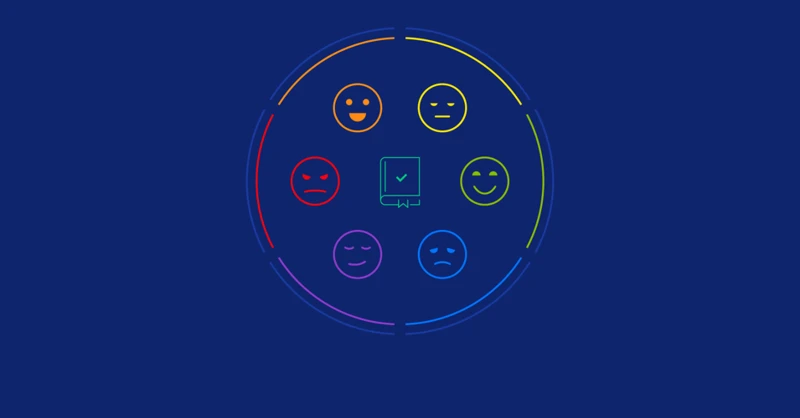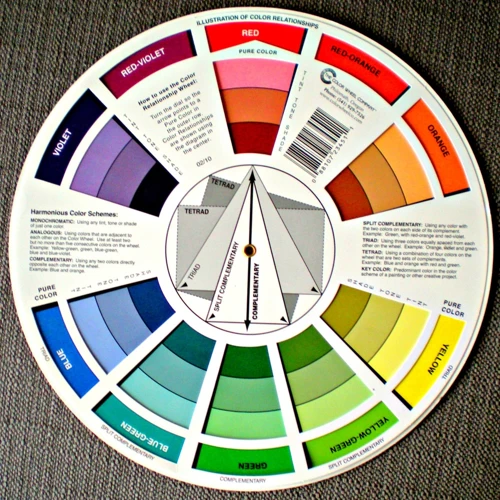Have you ever wondered why certain hues can instantly lift your spirits or calm your nerves? This phenomenon is rooted in color psychology, the study of how colors impact human behavior and emotions. It’s a field that has fascinated artists, designers, and psychologists for centuries, providing insight into the psychological impact of colors on our daily lives.
The Psychological Impact of Colors on Mood and Emotions
Colors have the power to evoke a range of emotions, from joy and excitement to sadness and tranquility. The emotional response to colors is often unconscious, yet it significantly influences our mental state and well-being. Understanding this impact can prove invaluable in various aspects of life, from personal style choices to marketing strategies.
Color Theory in Mood: How Colors Influence Us
Color theory in mood explains the psychological and physiological effects colors have on us. It’s a guide that helps predict how we might respond to different shades and tones. Warm colors often evoke feelings of warmth and comfort, while cool colors can provide a sense of calm and serenity.
Mood and Colors: Understanding Psycho Color Mood Impact
The connection between mood and colors is more than just a matter of preference. It’s a complex interplay that can enhance or dampen our emotions. The key to harnessing this influence lies in recognizing the subtle ways in which colors communicate with us.
Emotional Response to Colors: What Research Says
Research in the field of color psychology suggests that our emotional response to colors is not solely a social or cultural construct but may have biological underpinnings as well. For instance, the color red can increase heart rate, which might explain why it’s often associated with passion and urgency.
Mood-Enhancing Colors: Selecting the Right Color Palette
Choosing mood-enhancing colors for your home, wardrobe, or workspace can significantly impact your daily experience. Opting for a color palette that aligns with the emotions you wish to foster is a strategic way to create your desired ambiance or mood.
Color Mood Effects: How Different Hues Affect Us
The color mood effects are diverse and can vary from person to person. However, there are general trends in how certain hues influence our feelings and behaviors. Let’s explore some of the science behind these fascinating phenomena.
Color Palette Emotions: The Science Behind Color Selection
When we talk about color palette emotions, we refer to the psychological principles that guide our emotional reactions to different color combinations. Certain palettes can soothe, energize, or focus the mind, which is why color selection is crucial in design and art.
Color and Mental Health: Can Colors Improve Well-being?
Exploring the link between color and mental health reveals that certain shades can act as therapeutic tools. For example, blue has been shown to lower stress levels, while green can promote relaxation and healing.
Color Psychology in Everyday Life
It’s fascinating to observe how color psychology permeates every aspect of our existence. From the clothes we wear to the branding of our favorite products, colors shape our perceptions and experiences in subtle yet profound ways.
The Role of Colors in Marketing and Branding
Colors play a pivotal role in marketing and branding efforts. They can communicate a brand’s identity and values, influence purchasing decisions, and create lasting impressions on consumers. Savvy marketers understand the psycho color mood impact and strategically apply it to their advantage.
Colors in Our Environment: How They Shape Our Daily Experiences
The shades surrounding us in our environment can profoundly shape our daily experiences. Color schemes in offices, hospitals, and schools are selected with the intent to optimize productivity, promote healing, or facilitate learning.
Colors in Culture and Personal Experiences
While certain emotional reactions to colors are universal, cultural backgrounds and personal experiences also play a significant role in how we interpret and react to different hues.
Color and Culture: The Variations in Color Symbolism
Different cultures associate various meanings and symbolism with colors. For example, white is often associated with purity in Western societies, while in some Eastern cultures, it represents mourning. These cultural nuances are important to consider when studying color psychology.
Personal Associations with Colors and Their Emotional Impact
Personal experiences can also influence our emotional connections to colors. A color that is tied to a pleasant memory may evoke happiness, while one associated with a negative event could trigger a different emotion. These personal associations add layers of complexity to our understanding of color mood effects.
The Future of Color Psychology
As we continue to unravel the mysteries of color psychology, we are likely to discover even more about its potential to affect our emotions and behaviors.
Advancements in Understanding the Psycho Color Mood Impact
With advancements in neuroscience and psychology, we are gaining a deeper understanding of the psycho color mood impact. This knowledge has the potential to revolutionize fields ranging from marketing to mental health care.
Integrating Color Psychology into Design and Therapy
Integrating insights from color psychology into design and therapeutic practices can enhance the effectiveness of these fields. Designers and therapists alike can leverage the power of colors to create environments that support healing, productivity, and overall well-being.
If you’re exploring the psychological impact of colors and how they affect mood and design, you won’t want to miss our insightful articles. Discover how different hues influence emotions and behaviors in our comprehensive piece on psychological effects of colors in design. For those interested in the subtleties of less vibrant tones, our article on the psychological effects of neutral colors in design is a must-read. And to delve even deeper into the relationship between color and mood, our exploration of psychology of color and mood provides a fascinating look at this colorful science.
Conclusion: Harnessing the Power of Colors
We’ve explored the profound influence colors have on our moods and emotions. From the clothes we choose to the way we decorate our homes, color psychology offers valuable insights that can help us create more harmonious and fulfilling environments. By being mindful of the psychological impact of colors, we can enhance our well-being and navigate the world with a more nuanced understanding of the colorful tapestry that is human emotion.

